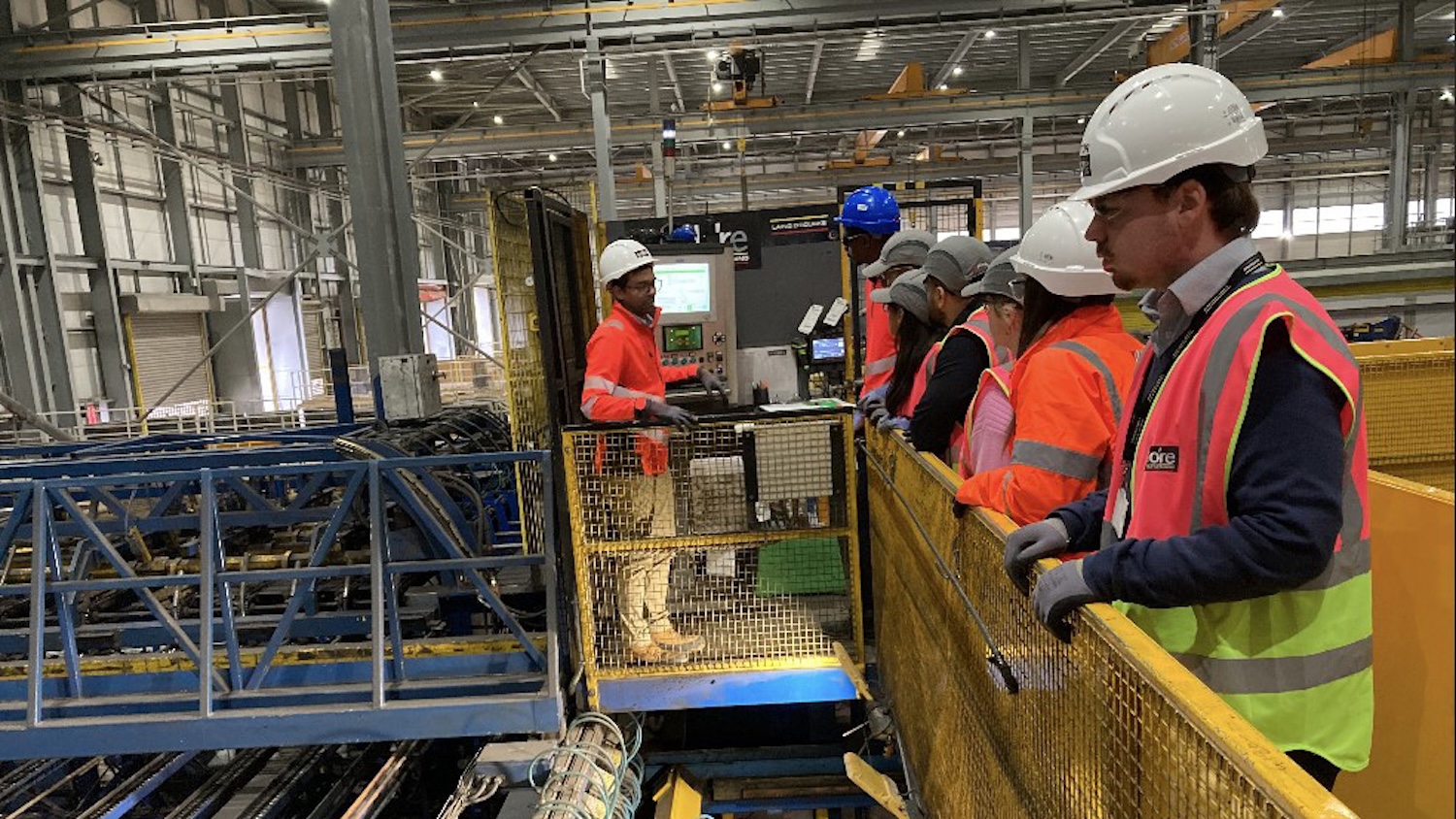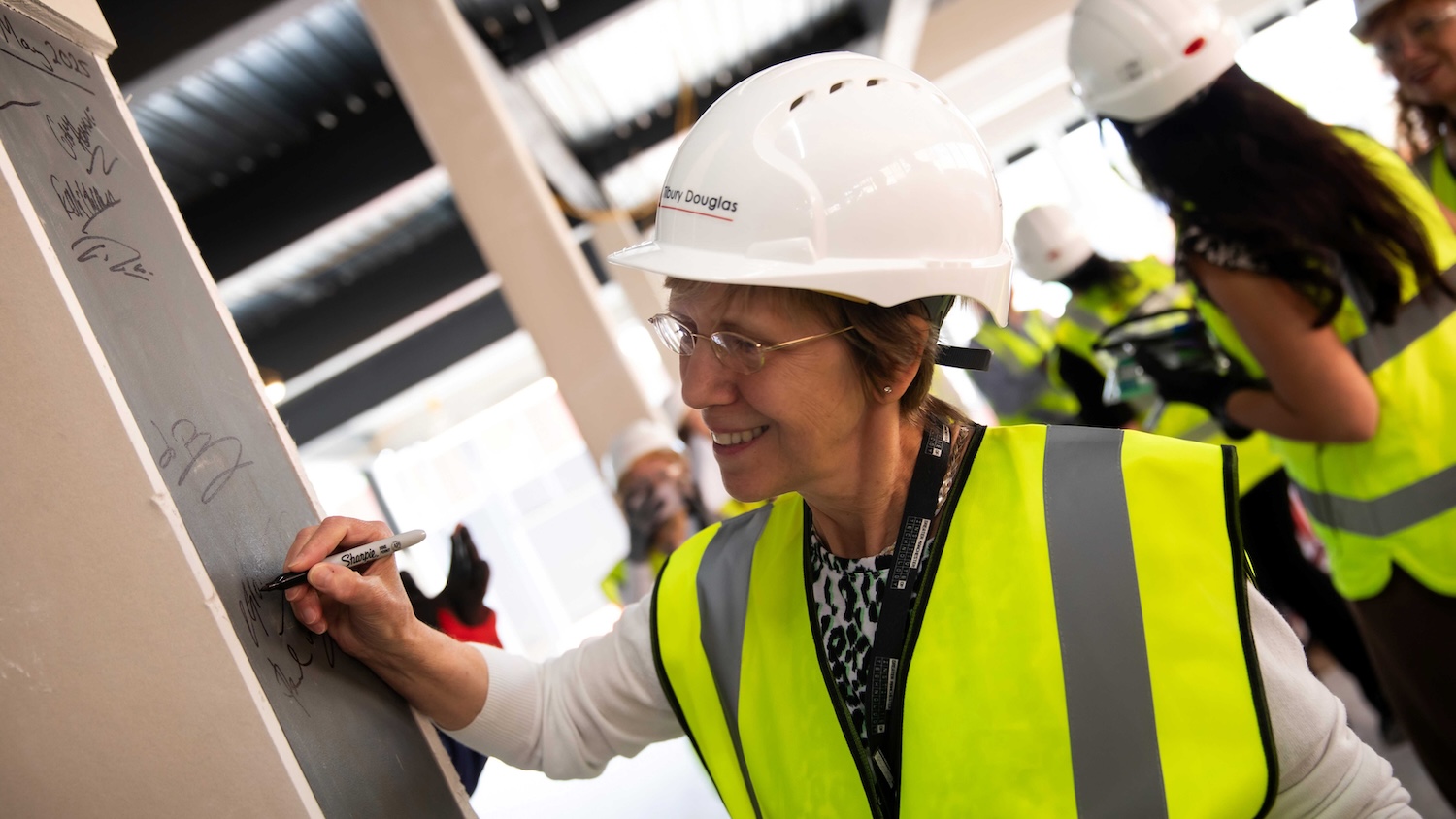The Greater Manchester Institute of Technology works with contractors to design qualifications to meet the sector’s needs. CM People speaks to some of the key players to hear how its apprenticeships are setting up the future workforce.
As part of this, centres were set up to deliver higher-level technical education with a clear route to high-skilled employment, focusing on STEM.
Speaking to CM People, Daniel Watson, who is studying at GMIoT, is keen to share his enthusiasm for what he sees as the advantages of an apprenticeship over traditional education.
“An apprenticeship helps because you’ve got the social skills, you’re in meetings, you’re communicating with other teams, you’re talking to people day to day,” the 22-year-old trainee planner says.
“I just don’t really see that happening as much if you’re in full-time education. You might not know how a business works or how a working environment is.”
He adds: “A few of my friends have gone from GCSEs and A levels straight to university and never had that work experience.
“I always think it’s great to have the qualifications, but […] it’s sometimes not as beneficial as having the two together.”
Alongside his studies at GMIoT, Watson is also working for contractor Laing O’Rourke.

I don’t think the story of skills needs in construction is going to change. That need is there… The genie is out of the bottle when it comes to AI and how that influences every way we work and design and our capabilities
Claire Foreman, GMIoT
GMIoT director Claire Foreman says the institute, which opened in 2023, helps to bridge the gap between industry needs and education.
It works with partners such as Laing O’Rourke and intelligence agency GCHQ, along with five Greater Manchester colleges and universities, to design and deliver qualifications relevant to employers.
“We have the employer view, and we have the view of those carrying out cutting-edge research to try and mould the curriculum so that the likes of Daniel and others can get a really current, but also futuristic, view of where industry is going,” she explains.
And with the government agenda focusing heavily on building, she says, its work with construction partners is vital.
“Nationally, it’s a fairly ageing workforce in construction and the technology skills are changing very, very fast. The workplace has changed quite considerably, and you need more digital skills than you’ve ever needed. You need more project management skills too,” she says.
“Transformation in skills”
Mark Cottam is social value lead at Laing O’Rourke and sits on the GMIoT’s steering group.
He says the company’s long-standing relationship with the University of Salford, which is the accountable body for the GMIoT and one of its five delivery partners, meant it was natural to get involved with the institute’s work.
He adds that modern methods of construction, digital innovation and the need to reduce carbon across the industry all mean there needs to be a “massive transformation in skills”.
“At Laing O’Rourke, we are looking at what we can do differently, how we can drive skills differently, how can we transform traditional construction into modern delivery,” he says.
“The crucial element to that is skills and employment. We’re not going to be able to do it on our own; we’re investing in that growth and working with organisations like Salford University and others.”
The GMIoT currently has 160 students taking qualifications in construction, including construction project management, construction management and site supervisor courses.
It is currently looking to identify further gaps in the market to extend its offering, Foreman says.
It was the former Conservative government that set up institutes of technology as a key component of the skills plan.
The Labour administration has since announced its own approach to training, including through the creation of quango Skills England and announcing dedicated funding for a network of construction apprenticeship centres.

I think having different career entry routes and pathways is critical in our modern society: we’re not stuck in a silo where you have to learn [in one] way
Mark Cottam, Laing O’Rourke
Foreman says she is waiting to see how the new body will interact with her institute. However, with a former member of the GMIoT steering group now working for Skills England, she is confident it will have an understanding of her organisation.
“We’re expecting a strategic position paper on skills and employment this summer and then a white paper in the autumn. At the moment, it is a little bit of a waiting game to see how that pans out,” she says.
“But I don’t think the story of skills needs in construction is going to change. That need is there. [For example] the genie is out of the bottle when it comes to AI and how that influences every way we work and design and our capabilities.”
The need for construction to keep up with technological change is a key theme for Foreman.
“I think there’s still quite a long way to go in the industry. I’m surprised sometimes to see some of the sector is still in the process of adopting digital twinning, drone surveying and those sorts of technologies, which are not as widespread as you might expect.”
Acceptance and understanding of apprenticeships in some sectors is not strong, Foreman says, which makes it a challenge for the Institutes of Technology to link up with employers to shape their courses.
Although construction is ahead of many others in this respect, the perception of apprenticeships among young people as a viable route to a career must be strengthened.
“We’ve lived in a world, in England particularly, where we’ve sort of said ‘A levels or equivalent, degree or equivalent’, as if there is no other route,” Foreman says.
“There are many routes either through apprenticeships or through technical qualifications at level 3 that [can] set you up.”
She also highlights the fact that those routes do not involve taking on student debt.

Value of a degree apprenticeship
Watson, who is undertaking a higher apprenticeship and then plans to move onto a degree apprenticeship, agrees.
“It’s quite a lot of money to go to university, especially if you’ve got accommodation and student loans all whacked in together, so obviously [having no debt] is one of the main benefits of the apprenticeship,” he says.
Watson, who works four days a week at Laing O’Rourke and spends one day at the GMIoT in the University of Salford’s campus, says some people were surprised that he chose a degree apprenticeship.
“I’ve got a couple of friends who went straight to university and then have applied for roles within the construction industry after they’ve finished their three years. Or I’ve had friends where they’ve done GCSEs and then just gone straight through to work,” he explains.
“I always think it’s beneficial to combine the two: getting the qualification as well as the work experience.”
Foreman stresses that she does not want to discredit traditional degrees but to highlight the benefits of the non-degree route and show that there are other ways to pursue a career.
Laing O’Rourke’s Cottam agrees. “Society has changed and what people want to see are opportunities to learn in different ways. I think having different career entry routes and pathways is critical now in our modern society: we’re not stuck in a silo where you have to learn [in one] way.
“We use all different routes, we’ve got different roles, we’ve got different people coming in at different paces and there’s flexibility for people to chop and change.”
Building a diverse workforce
This can also help bring a more diverse workforce into the construction sector, he adds, beyond its typical older, male profile.
And amid all the change both in society and in the sector, it’s vital for those working within construction to help spread the message about the many career options that exist within it, Cottam adds.
“There are such a variety of roles that people can enter into. I’m in social value and sit in a wider sustainability function, which a few years ago had about 15 people in it. There are 70 people in it now, in everything from R&D to sustainable supply chain to data.
“A lot of people [outside the industry] don’t even know what some of the roles are. There’s such a variety of different opportunities for people.
“I think that outreach and engaging with schools, engaging with colleges, and making people aware that there’s other opportunities now – that it’s not just a traditional trade – is so important.”
View the original article and our Inspiration here


Leave a Reply